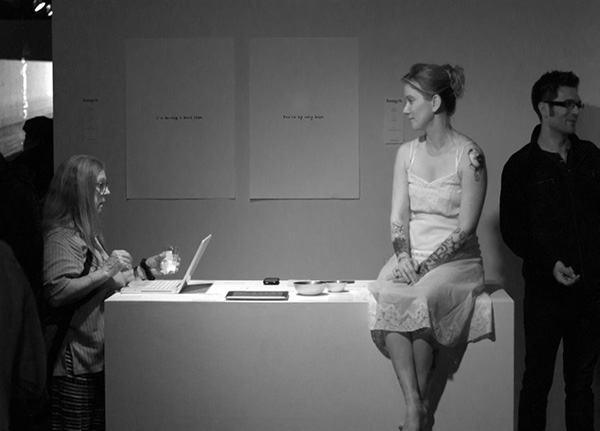
ME/ASSAGE ME
first performed on
October 14, 2011
H+R Block ArtSpace, Kansas City, MO
performed once in 2011
KATE SAGE-LINDHOLM
Shawnee, KS
746020520a746020520r746020520t746020520@746020520o746020520r746020520g746020520a746020520n746020520i746020520c746020520a746020520r746020520t746020520f746020520a746020520c746020520t746020520o746020520r746020520y746020520.746020520c746020520o746020520m
organicartfactory.com/portfolio/2011-2010/meassage-me
ME/ASSAGE ME
KATE SAGE-LINDHOLM
Started in 2010, the FaCe Books project is an ongoing investigation of the ideas of “friendship” and “community” in the age of social networking. “Me/assage Me,” the third piece in the series, is an interactive installation which primarily explores questions around generosity, accessibility, and inhibition. Viewers were invited to interact with the artist, who publicly made two statements: “I’m having a hard time,” and “You’re my only hope.” In addition to verbally stating her situation, two large handwritten signs and various written documents made the same claim. A placard was also handed out by the artist [as well as being available for anonymous procurement by the viewer] suggesting three immediate interactions that would help make the artist feel better via: 1) touch, 2) voice, or 3) text. The artist attempted to actively engage anyone who came within 18 inches of the installation.
When confronted with choices about how to directly interact with another human being who is present, most people chose a mediated response, sometimes refusing even to make eye contact with the artist. Though the artist openly expressed that “touch” was what would make her feel the best, participants were predictably much more comfortable interacting via technology. Several people expressed a desire to participate through touch, but stated that an overwhelming feeling of embarrassment or shyness prevented them from doing so. As this was anticipated, a number of devices were made available for mediated interaction (a cell phone, a tablet computer, and a laptop) and placed within three feet of the artist. Proximity to the artist did not appear threatening when the viewer used a device, as many participants wrote on her publicly displayed Facebook wall during the performance. Some took a placard and called or texted from outside of the exhibition. The artist continued to receive voicemails and texts for several weeks after the live performance, several of which are documented on the project’s webpage, listed on the opposite page.